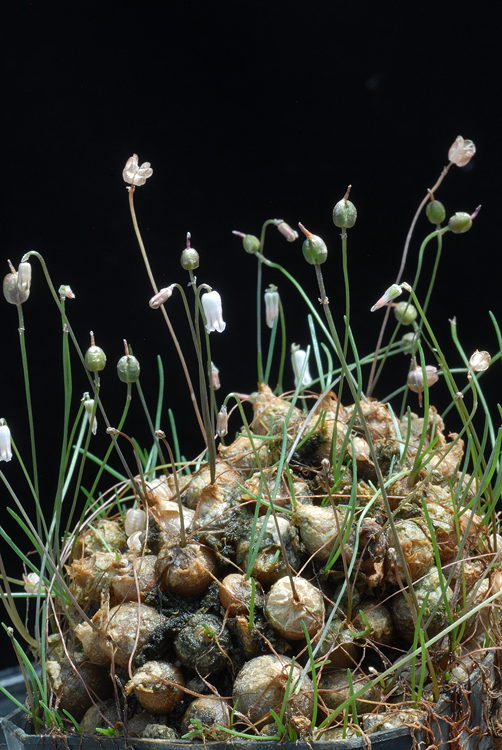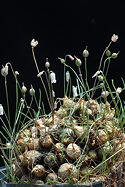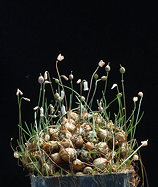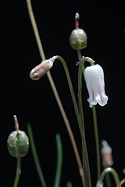This miniature bulb was originally described by Harvey in 1844 as the monotypic Litanthus pusillus. One might be tempted to think that generic name has something to do with the fact that this is a little thing. In fact, the root lit is from Greek lithos, a stone, as the plant grows in rock crevices, and its small flowers (Greek, anthus, a flower) are held aloft above the bulbs. The epithet pusillus (Latin, very small) is the part of the name that refers to the plant’s size. How small is this plant, you ask? Bulbs are 4-10 mm in diameter (about the size of one’s little fingernail) and bear one, or a few, filiform leaves to 30 mm (longer in a greenhouse). Solitary, tubular flowers 4-6 mm long are borne on slender peduncles 20 – 30 mm tall. If you are a lover of miniatures, you can take out your metric ruler and imagine the most appropriate container for your entry in the miniature class of your local cactus and succulent show! This plant has attracted the attention of observant botanists for some time and bulb experts Manning and Goldblatt determined in 2000 that it fits well as a member of subgenus Litanthus within the genus Drimia necessitating a new name. They chose a name that reflected its single-flowered inflorescences. The plant is widespread in the aseasonal (with year-round rains) and summer-rainfall parts of South Africa, from the Little Karoo through the eastern half of the country and north into southern Zimbabwe. It grows in sheltered, seasonally damp situations, often in mats with moss or other dwarf succulents. Ours came to us from Huntington Tropical’s Curator, Dylan Hannon, who acquired the plant from UC Berkeley Botanic Garden, which obtained it from a horticultural source in Ireland. For us it has proliferated via self-fertile seed to form a mat at the base of a liliputian forest of Cyphostemma hardyi growing in our greenhouse. We offer several bulbs (3 or more) of HBG 106389 for $8.

Published in the Cactus and Succulent Journal, Vol. 90 (2), Summer 2018



